Ever wonder what's under the waves right off the coast of the Commonwealth? From the beautiful to the true beasts, the beings below the surface are worthy of their own stroll down the red carpet. To honor the wide variety of marine mammals, fish, and invertebrates that parade around our ocean waters all year, we present the most intriguing marine creatures of Massachusetts!
Coolest: Octopus
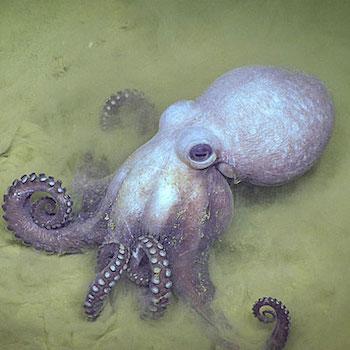
With 3 hearts, 8 arms, and the ability to match its skin color to its surroundings, the common octopus (Octopus vulgaris) exudes cool. Considered the valedictorians of the invertebrate world for their ability to problem solve and retain lessons learned, they are also able to regenerate an arm (or 6). Common octopuses (or is it octopi?) are carnivorous predators and the ocean is their paella—their favorite foods are mussels, scallops, shrimps, clams, and crabs. But they are also able to use their masterful disguises to pounce on unsuspecting lobster and fish. Southern New England is the northern extent of this creature's range—and in North Atlantic waters, these adaptable invertebrates generally grow to 24-36 inches and have a natural lifespan of 12-18 months. For more on these MENSA masters of disguise, check out National Geographic's Common Octopus page.
Most Distinct: Wolffish
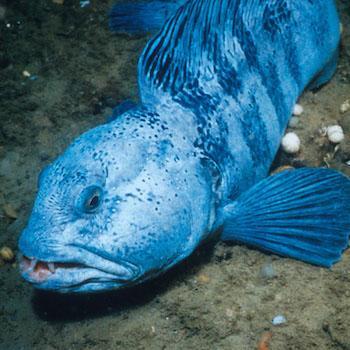
Why what a nice mouth you have, oh Atlantic wolffish (Anarhichas lupus)… wow, you have two rows of sharp and snaggly teeth. They almost distract from your undulating, eel-like body! Bless your little cold-cold blooded heart—you are actually quite harmless. Although people have called you a seawolf, devil fish, or wolf eel, and you can grow up to 5 feet long, you don't eat other fish and you pose no threat to humans (unless they try to mess with you outside of the water—then those 2 rows of teeth might get some action!). You are actually a very important part of the ecosystem as you munch on those horrible invasive green crabs. And it's kind of cool that you live way, way, WAY down at the bottom of the ocean (preferred habitat 200-400 feet below the sea level) and produce natural antifreeze to keep your blood circulating. Wolffish, you're beautiful on the inside! To find out more, check out the National Oceanic and Atmospheric Administration (NOAA) Fisheries Atlantic Wolffish page.
Most Venerable: Horseshoe Crab
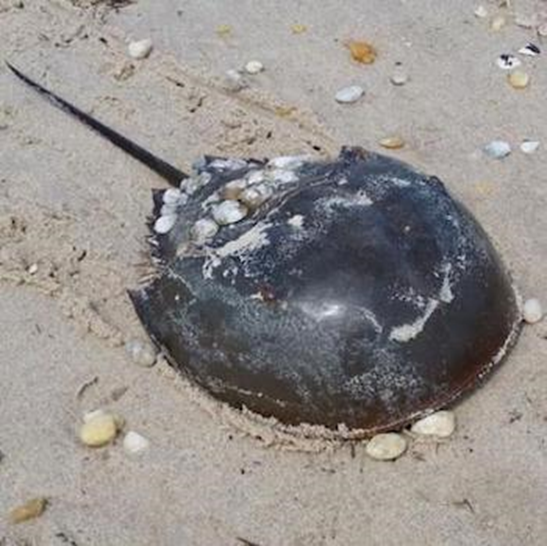
Horseshoe crabs (Limulus polyphemus) are prehistoric—like they were around when the dinosaurs roamed the earth. While it sounds like an oxymoron, they are considered to be living fossils, (i.e., the fossilized remains of a horseshoe crab from thousands of years ago would be almost identical to a live horseshoe crab you'd find today). And though their pointy tails look dangerous, they contain no poison or venom and are mainly used for steering and to help right themselves when they get stuck on their backs. Horseshoe crabs need to molt their carapace (tough exoskeleton) as much as 16 times before they reach maturity at around age ten! And horseshoe crabs are Boston's original blue bloods—their blood really is blue! This rare blood contains a very important compound, Lysate, which is used in cancer research. (No crabs are harmed in the extraction process, only minorly inconvenienced.) For more on these scuttling, hard-shelled living fossils, explore horeseshoecrab.org.
Most Dramatic: Lionfish
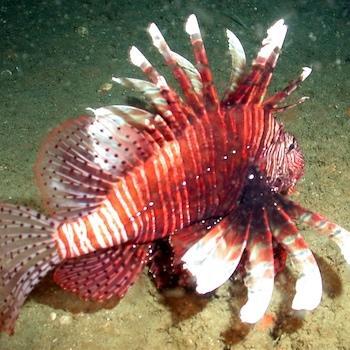
Like its African namesake, the lionfish has a majestic flowing mane surrounding its head, giving it a very striking appearance. No wilting violet, the lionfish comes in two varieties—the Pterois volitans and Pterois miles (red lionfish and devil firefish, respectively). Native to the Indian and Pacific Oceans, they are considered invasive species in the Atlantic, most likely introduced by aquarium hobbyists. First observed off the coast of Florida in 1983, by 2012 they were a documented invader around the Atlantic and have been found off the coast of the Commonwealth. A full-grown adult lionfish can be up to 18 inches long, and they feed on at least 50 known species of fish, including valuable commercial fish. They store venom in their spines and use it on their prey to subdue them. Humans have learned the hard way that a sting causes extreme pain, sweating, respiratory distress, and even paralysis. The NOAA Fisheries Impacts of Invasive Lionfish page has more on the history, impacts to native fish and coral reefs, and future management strategies for this beautiful but dangerous fish.
Greatest "Star" Potential: Sea Star
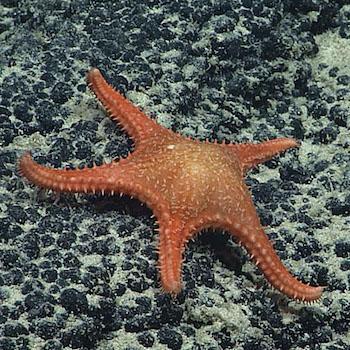
Often called starfish, these star-looking marvels of the ocean don't have gills, fins, or a skeleton as fish do. They are echinoderm invertebrates—more closely related to sea urchins and sand dollars than fish. If you turn one over, you will see hundreds of tube feet, most likely wiggling away. These tube feet are conveniently equipped with suction cups that allow them to grasp their prey (they feed on mussels, clams, scallops, snails, and any dead animals they find) and pry shells apart. (And considering that they have no brains, it's hard to imagine how they figured this out.) These aquatic transformers of the Atlantic can regenerate limbs and even create whole new starfish when split in half. National Geographic Kid's Starfish (Sea Star) page has more on these adorable, no-brain non-fish.
Down-Right Scariest: Great White Shark
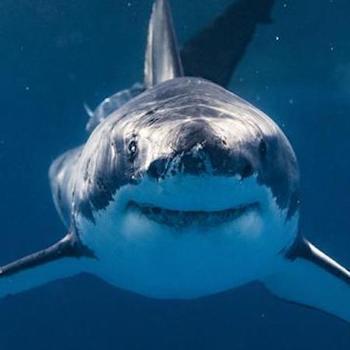
As the largest predatory fish known to mankind, the great white shark (Carcharodon carcharias) can grow to 20 feet long and weigh more than 5,000 pounds. And with not one, not two, but FIVE rows of teeth, the ability to move at speeds up to 15 miles per hour, and a history of dabbling in dining on human flesh… well, it is no wonder that Jaws struck a scary chord with so many beach-loving movie goers when it came out in 1975. (In reality, of approximately 100 shark attacks on humans annually, 1/3 are from great whites, and most of those are them taking a bite, deciding they are not so fond of homo sapiens flesh, and moving on.) Due to their importance in the eco-chain and the fact that they have been targeted commercially, great white sharks are currently classified as a prohibited species (no retention allowed) in federal waters (since 1997) and in Massachusetts state waters (since 2005). Get more shark bites on the Atlantic White Shark Conservancy’s website, and follow their Sharktivity App to find out where the sharks are visiting.
Additional Creatures from Around the Globe!
Chubby, yellow sea cucumbers…pink anemones that sting…teal-green subarctic sunflower stars…and mollusks with shells stronger than anything humans can manufacture—the great blue highway is full of funny, cool, colorful, scary, and strange stuff. Explore Oceana’s Marine Life Encyclopedia to learn fun facts and see photos of creatures from the deepest depths to the shallowest tide pools.
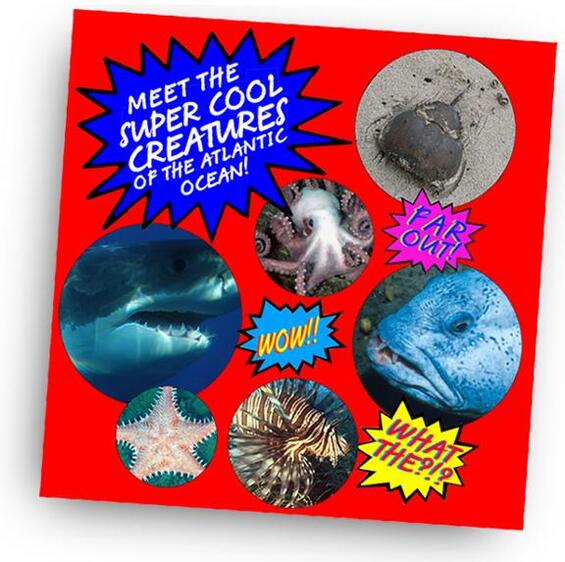
Photos: Octopus, Lionfish, Horseshoe Crab, Sea Star, and Great White Shark - National Oceanic and Atmospheric Administration (NOAA); Wolffish - Peter Auster and Paul Donaldson (National Undersea Research Center, University of Connecticut)